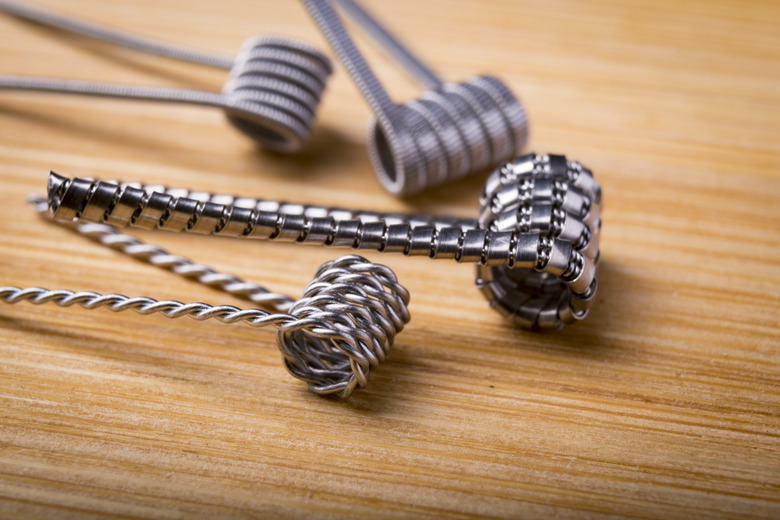What Is Nichrome Wire Used For?
Nichrome, also known as nickel chrome, is an alloy produced by mixing nickel, chromium and, occasionally, iron. Best known for its heat resistance, as well as its resistance to both corrosion and oxidation, the alloy is incredibly useful for a number of applications. From industrial manufacturing to hobby work, nichrome in the form of wire is present in a range of commercial products, crafts and tools. It also finds applications in specialized settings.
TL;DR (Too Long; Didn't Read)
Nichrome wire is an alloy made from nickel and chromium. It resists heat and oxidation and serves as a heating element in products such as toasters and hair dryers. Hobbyists use nichrome wire in ceramic sculpture and glassmaking. The wire can also be found in laboratories, construction and specialized electronics.
Nichrome Properties
Nichrome Properties
Though there are various recipes for nichrome that are dependent on its intended use, the most common form of the alloy is produced from a ratio of 60 percent nickel and 40 percent chromium. Regardless of ratio, all nichrome alloys share properties that make the alloy noteworthy. Nichrome is resistant to heat and corrosion in water, and when heated, it forms a thin layer of chromium oxide that makes it practically immune to oxidation. Most notably, nichrome is highly resistive, causing it to heat up even when exposed to a small electrical current. These traits give nichrome wire a wide variety of uses across industries.
Heating Elements
Heating Elements
Because nichrome wire is so resistant to electricity, it is incredibly useful as a heating element in commercial products and home tools. Toasters and hair dryers use coils of nichrome wire to create large amounts of heat, as do toaster ovens and storage heaters. Industrial furnaces also use nichrome wire to function. A length of nichrome wire can also be used to create a hot wire cutter, which can be used either at home or in an industrial setting to cut and shape certain foams and plastics.
Hobby Help
Hobby Help
Because nichrome wire is an effective heating element, it is frequently used in hobbies and art forms. For example, ceramic sculptors and glassmakers both use nichrome – both as a support in their more complex works and as part of their firing kilns. Because nichrome can withstand high temperatures, using nichrome wire as a skeleton allows artists to keep their projects together during the firing process without fear of breakage.
Specialty Applications
Specialty Applications
Nichrome's characteristics also make it useful in specialty products and projects. Nichrome wire works exceptionally well as a remote igniter and is regularly used in fireworks. It can be used in laboratories to detect the presence of trace metals in flames, and customized electronic cigarettes and other vaporizers often use nichrome wire in their construction.
Cite This Article
MLA
Flournoy, Blake. "What Is Nichrome Wire Used For?" sciencing.com, https://www.sciencing.com/nichrome-wire-used-for-5871336/. 9 May 2018.
APA
Flournoy, Blake. (2018, May 9). What Is Nichrome Wire Used For?. sciencing.com. Retrieved from https://www.sciencing.com/nichrome-wire-used-for-5871336/
Chicago
Flournoy, Blake. What Is Nichrome Wire Used For? last modified March 24, 2022. https://www.sciencing.com/nichrome-wire-used-for-5871336/
